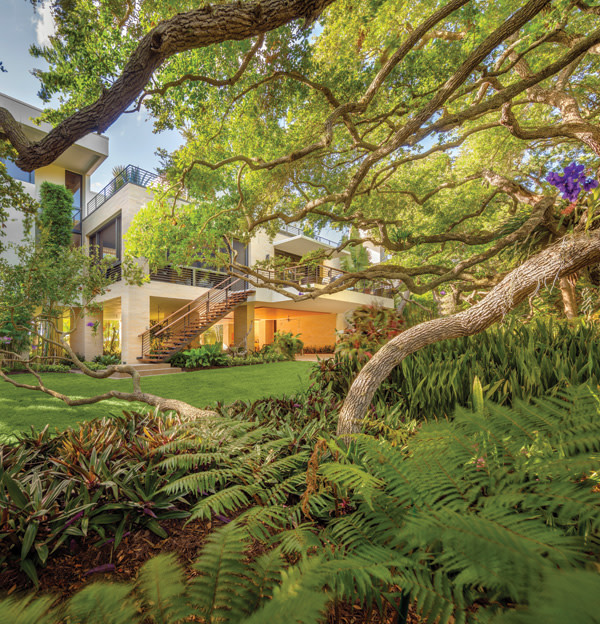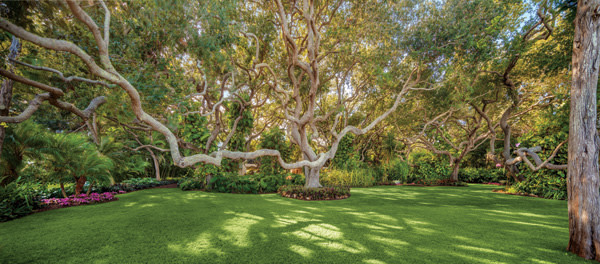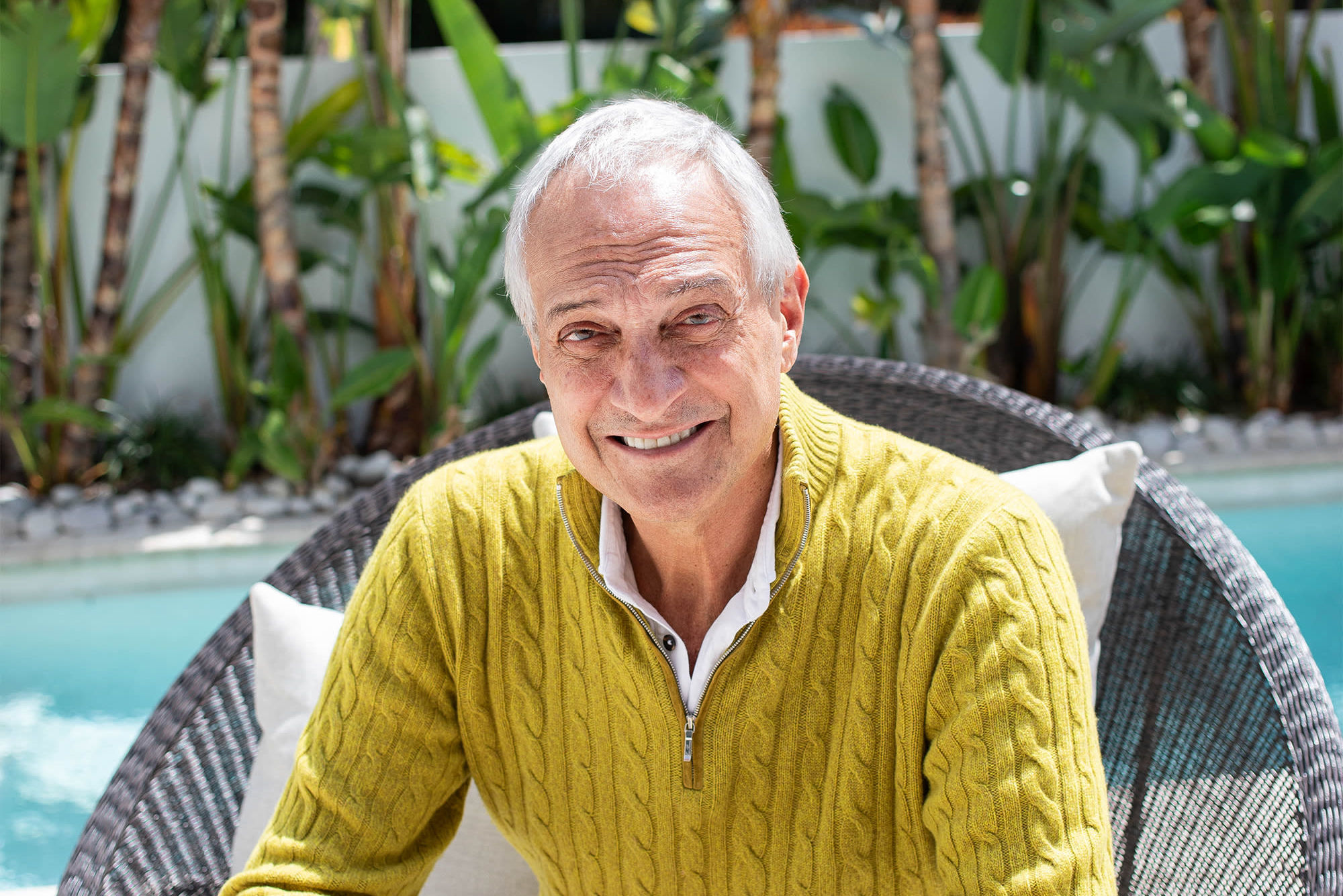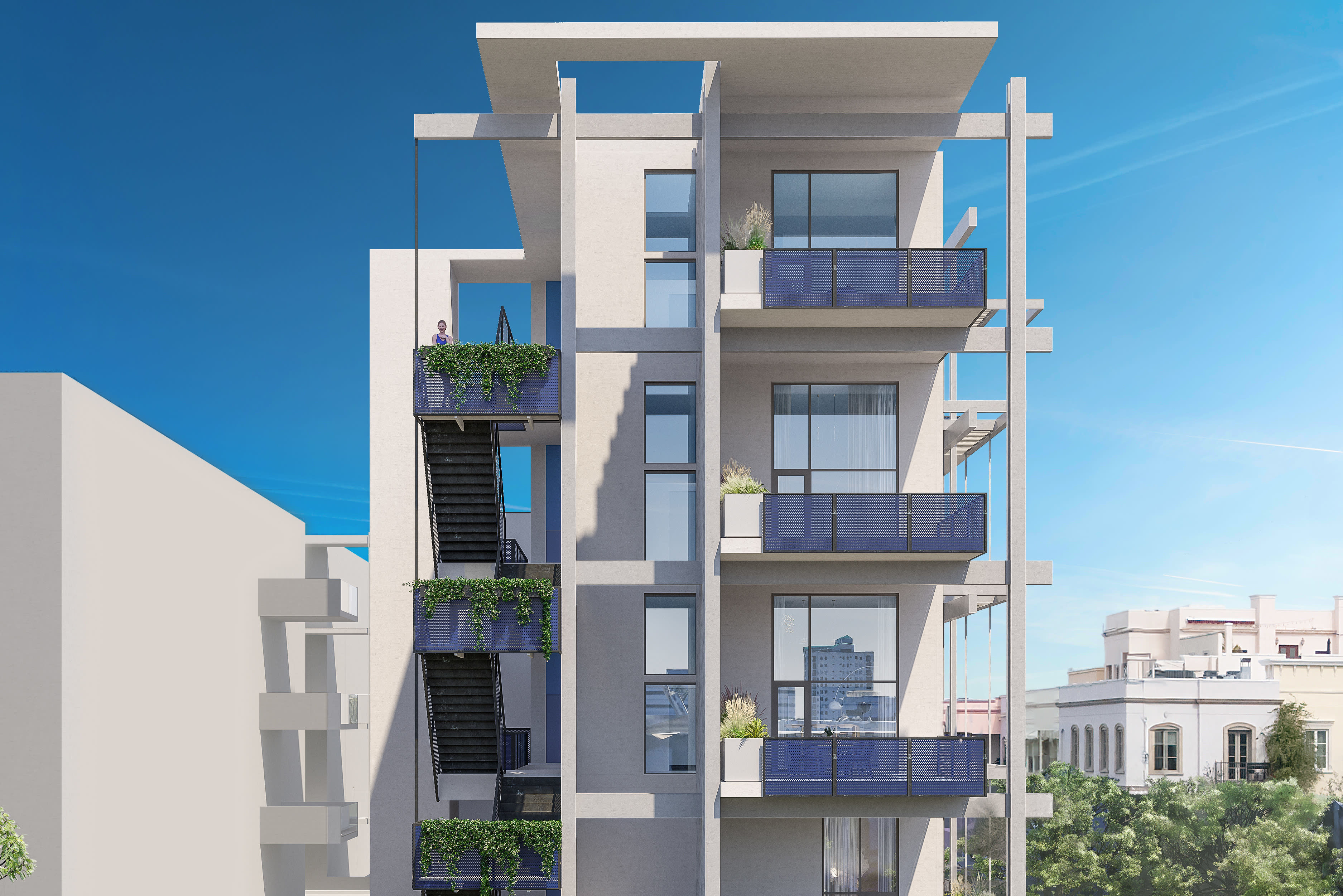A Casey Key Home Gets a Magnificent Landscape Design

Landscape designer John Wheeler has had his share of important projects, but this one was a once-in-a-lifetime opportunity: a stretch of five undeveloped Gulf-to-bay acres on North Casey Key Road and a pair of nature-loving homeowners who told him, “Have at it.”
The homeowners brought together Wheeler, Jerry Sparkman of Sweet Sparkman Architects and contractor Michael Walker to create a compound of three architecturally significant buildings on the lush five acres.

On the Gulf side are a long, horizontal, three-tiered main house and a separate, smaller two-story, cube-shaped beach house. Nestled into a grove of more than 30 live oaks along the bay is a cypress-clad guesthouse—designed like a treehouse, the architect told Sarasota Magazine in 2011, with a one-of-a-kind curved roof to mimic the sweep of the massive oaks that, over eons, have been shaped by western coastal breezes. The entire project won a Gold Best in American Living Award from the National Association of Home Builders and has been featured in national shelter magazines.

The couple, who split their time between Minnesota and Casey Key, had bought the property from an elderly couple who’d lived there for decades in an old Cape Cod-style house consumed by tangled undergrowth. The live oaks along the bay were so thick with poison ivy that Wheeler hired professional climbers who spent more than a month picking off every vine. “It was like sculpture coming alive, to see all those curvy branches,” he says. Throughout the process, he emphasizes, “The new owners’ orders were all about the land. “They said our design process was a big responsibility—not just to create their vision but to honor this special piece of ground.”
After days of digging through undergrowth, Wheeler found a high elevation in the middle of the property rolling down to the Gulf, with three distinctly different eco-systems: the salt-water beach area, a “semi-shady, semi-sunny area with more open space where the main house was going to go,” and the shady, ancient oak hammock.
Along the beach path that crosses over North Casey Key Road—so crowded originally with invasive Australian pines that the beach wasn’t visible from the property—he built a walkover and lined it with beach daisies, sea grapes, green buttonwood and bendy Sabal palms. “We got really creative with native plants out there, blue palmettos, muhly grass, sea oats—different layers and colors,” he says.
Manmade water features flow under the elevated main house, anchored by a colorful living wall of bromeliads, orchids and tillandsias. More color comes from the fuchsia bougainvillea Wheeler planted with abundance on the trellis of the pool cabana. (Wheeler has a special source on the east coast of Florida who grows bougainvillea for him; they were already 18 feet tall when he installed them, “for instant gratification.”) Thousands of blooms drop into the pool and onto the deck below—“the pool guy hates them,” Wheeler says—but no one can deny their visual impact.

Wheeler introduced more than a dozen different species of palm into the landscape design, including Canary Island date palms and Malayan coconut palms, as well as Australian tree ferns. Near the pool are some quirky Old Man palms, “a collector’s palm,” he says, with trunks covered with thick, curly fibers—they look like The Addams Family’s Cousin Itt with a palm-frond hat. And from the old Gianni Versace estate in Miami, he purchased a magnificent spider reclinata—a cross between a reclinata and a pygmy date palm—and gave it a place of prominence on the grassy lawn near the pool.
Outside the main house’s top-floor entertainment room, Wheeler installed a green garden roof filled with succulents: giant agaves, hard-to-find tree aloe, yucca and foxtail ferns. At more than 940 square feet, it is the largest green roof in Sarasota County, so large an engineering project that he consulted with Dr. Marty Wanielista of the University of Central Florida, whom he calls “the go-to guy on engineering green roofs.” A small green roof is outside the daughter’s room on the other side of the house, too.

Wheeler calls the ancient oak hammock along the bay, “just magnificent, like a mini Selby Gardens.” He hung bromeliads and huge specimen orchids in them. “[Designing] the guesthouse with those big curved beams to tuck into the oaks—you’ve got to give Jerry and Michael a lot of credit,” he says. “My job was to protect those old live oaks without hurting them.”
The logistics of working on such a mammoth project on North Casey Key are formidable. “We often had to close down the whole road to bring materials in,” he says. And the project is water-wise; all the rainwater from the deck and roof downspouts is piped into a 6,000-gallon in-ground cistern to supplement irrigation.
Wheeler calls the North Casey Key project “the job of my lifetime to date. I’m very lucky.” He’s so attached to the property (“it’s something that I love, like giving birth to a baby,” he says) that he agreed to stay on. He and a crew of seven spend one day every week tending the property.



